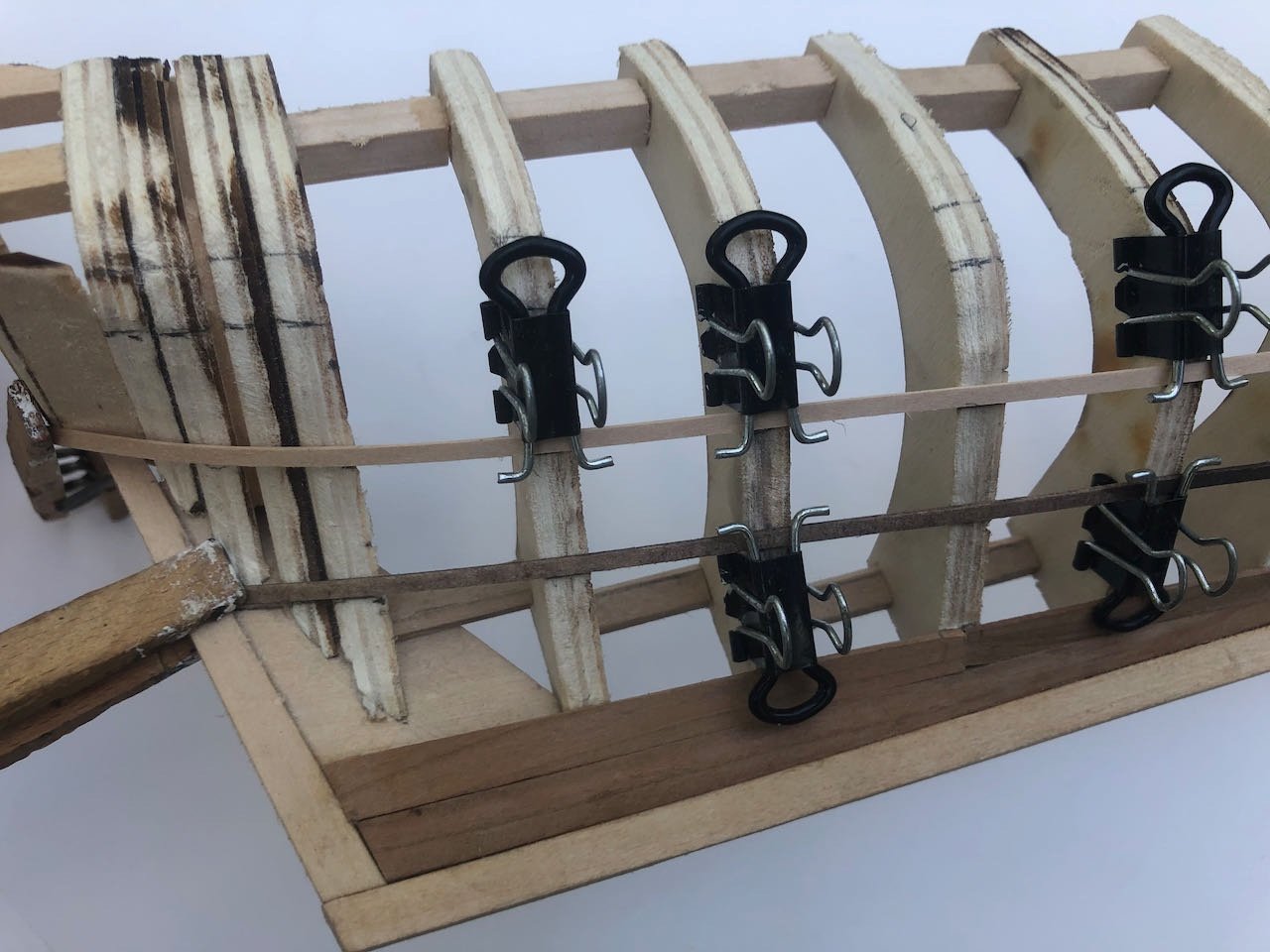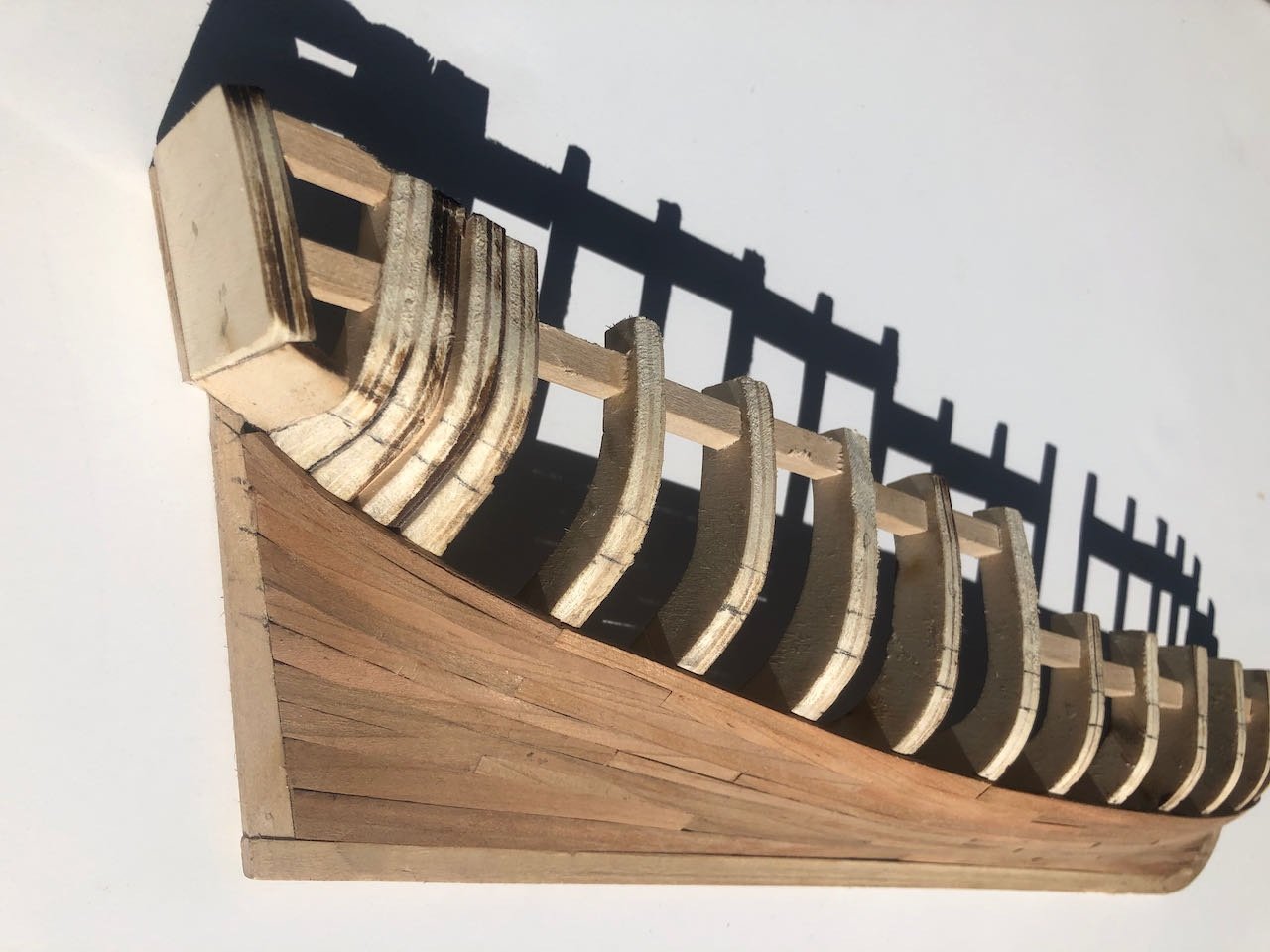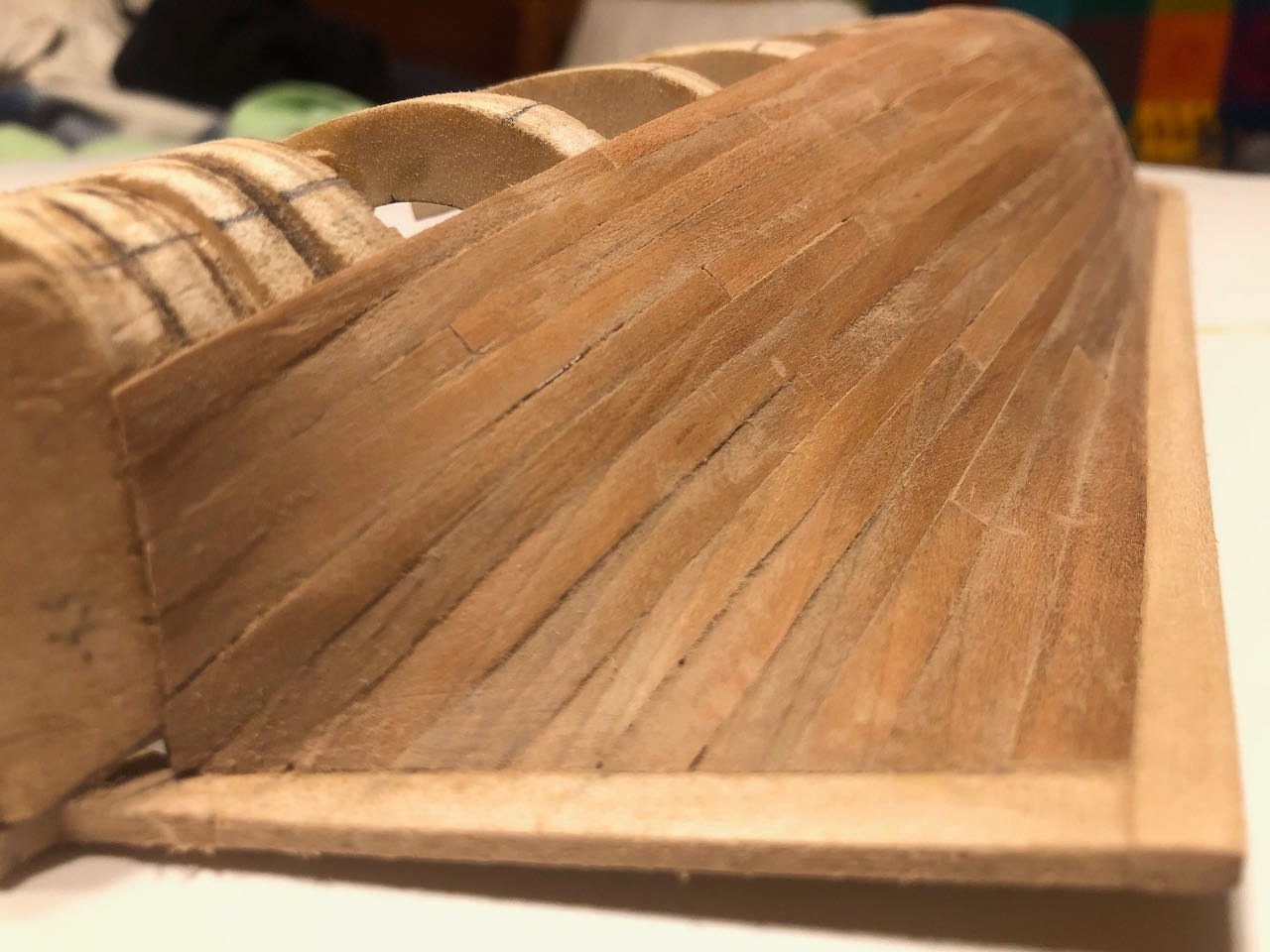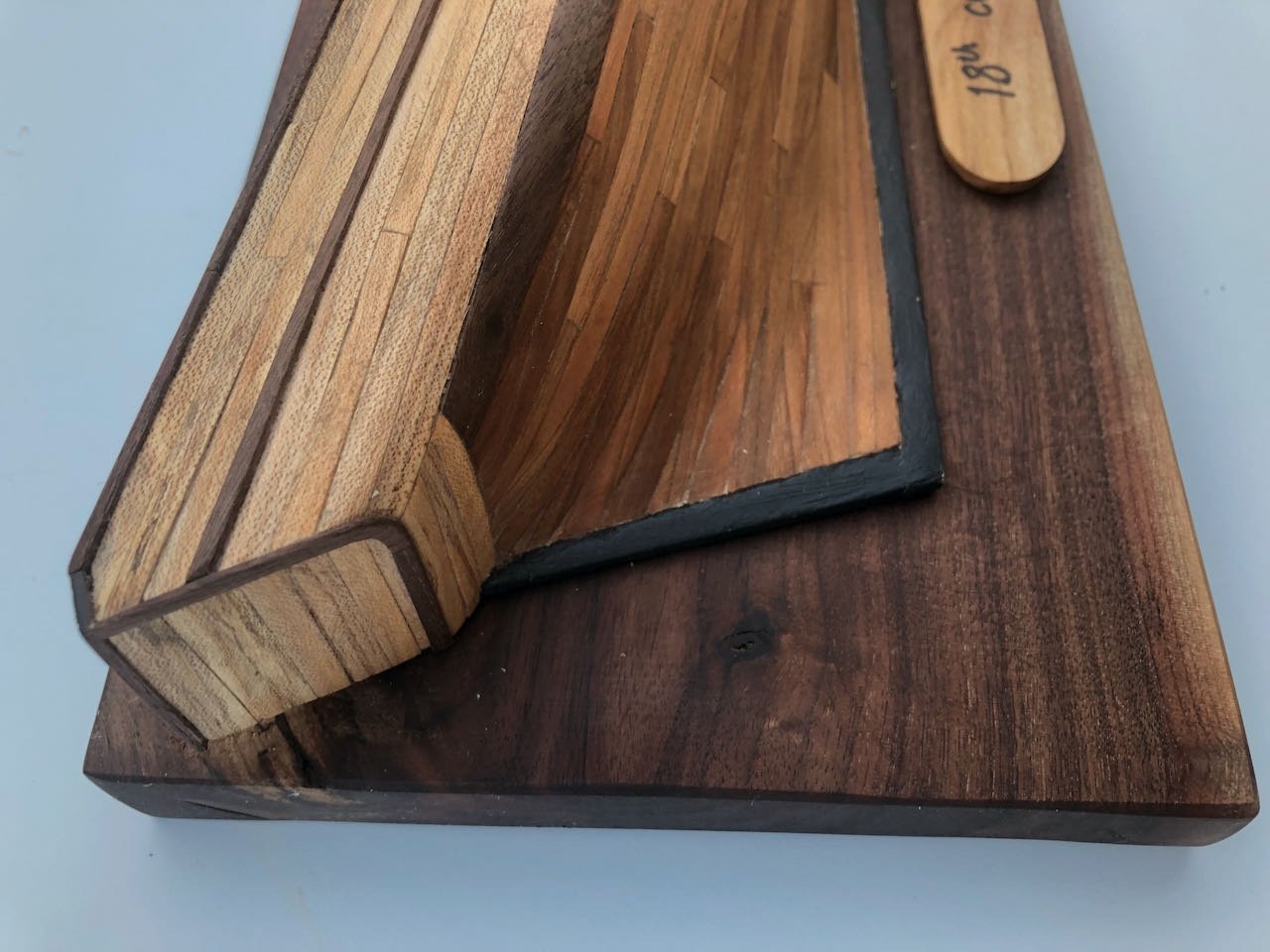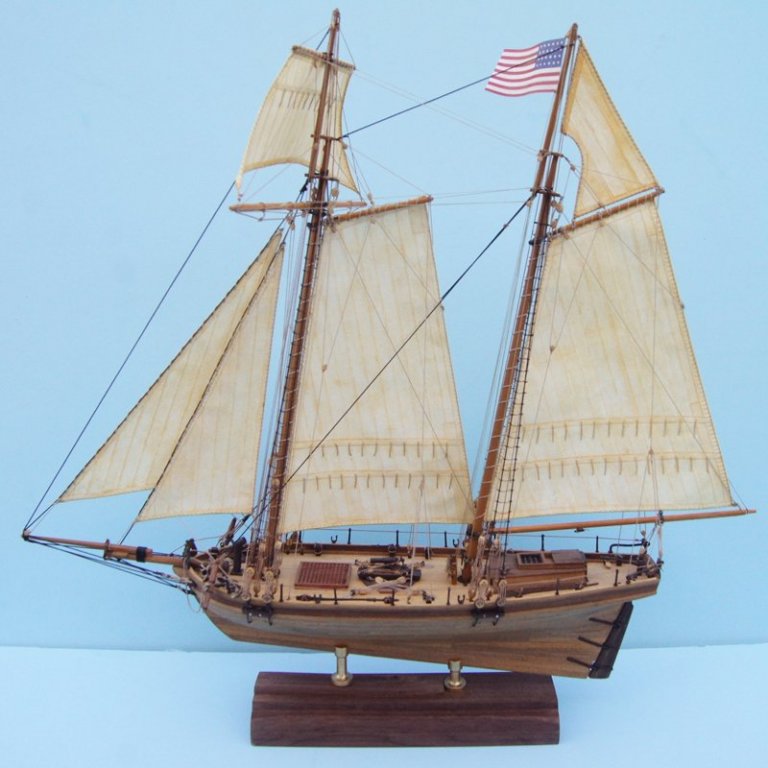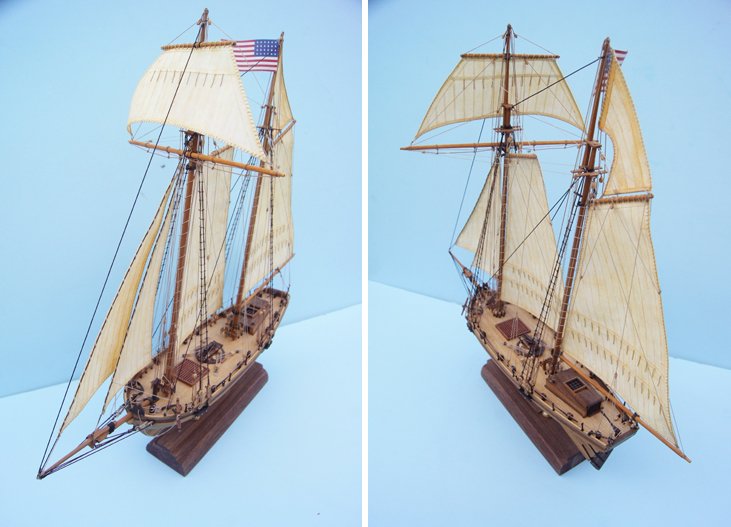-
Posts
3,538 -
Joined
-
Last visited
Content Type
Profiles
Forums
Gallery
Events
Everything posted by Cathead
-

fairing of the hull
Cathead replied to Mike P.'s topic in Building, Framing, Planking and plating a ships hull and deck
Hey Mike, welcome to MSW! You've asked a good question, but posted it in the Build Log section, where members document the progress of their builds. It's an awkward place to ask a more general method question like this. I'd suggest going to the Framing and Planking section of MSW, where you can (a) have a better chance at an answer, and (b) do some quick searches for content related to your question, since fairing and sealing hulls has been discussed in the past. -
Wefalck, only pulling forces might be the normal case, but Mark makes a really good point about a combat vessel having a steering rope shot away and needed to exert both force directions from the other end, all but necessitating a solid connector (as you suggest). Now I don't know what to think again. Brian, this area was exposed at the stern, right? Easy to fire on and damage but also easy to repair? Also exposed to elements? (as opposed to being enclosed in a way that protects against damage but prevents easy access) If so, does that argue against any rope being used until the lines were inside the hull? So maybe that apparent wire rope does run through the pulleys into the hull, and there was a solid bar attaching the tillers?
-
That's got to hurt, I'm sorry! I've been there. But since your goal is to learn, I think you'll be happy in the long run. But I do feel a little bad! Keep going, you'll be thrilled when it comes together.
- 44 replies
-
I have no educated opinion, but I certainly see your point that the thing dangling from that rudder looks like stiff wire cable rather than dangling rope or chain. Is it possible that, instead of connecting to the rest of the control system, it's a short length of wire that connects the two tillers internally (since you imply that something did so, and this would have to be strong)? Also, in that photo, it looks to me like there's a semi-circular feature connected to the upper-left part of what you've marked as the tiller. This would appear to correlate to the semi-circular part of the tiller opposite the rudder (at the internal end of the tiller), as shown in your first drawing. If so, that wire/cable is coming off the opposite end of the tiller and thus wouldn't be anything from the control system since that also attached to the inner end of the tiller. I can't tell from the photo whether the tiller is at all attached to the rudder or is just dangling loose. For my theory here to be true, it has to be dangling loose and rotated nearly 180º. But if it's still attached, what's that semi-circle doing at the rudder end of the tiller?
-
Great job! Such fun to follow along, thanks for taking the time to share it all with us.
- 146 replies
-
- Harriet Lane
- Model Shipways
-
(and 1 more)
Tagged with:
-
Don't feel bad, you're doing fine and as you noted, the whole purpose here is to learn and practice. Mine had all sorts of issues that I would (hopefully) do better next time!
- 44 replies
-
So here's what my framing looked like pre- and post-fairing (you can also see how uneven the original frames were in my kit). I basically just kept removing material, checking with thin battens, until I got a run that was smooth. I didn't write anything about this part of the stern in my log, unfortunately, and my memory isn't clear. I rechecked @tlevine's instructions, and it seems like my fairing was pretty similar (see, for example, her photo 97 and mine here) but it's so hard to interpret this stuff from flat photos. In my opinion, more important than trying to emulate any exact shape is to make sure the shape you end up with has a smooth run with no knuckles or awkward angles. Use thin battens obsessively until you're sure every plank will flow across that space and end where you want it, including the butt ends. It can even help to use several side-by-side to help see places where sudden changes occur along a frame (one can lay flat and the next start to knuckle).
- 44 replies
-
That run of planking looks so much better! Well done. Here's how it looked on mine prior to planking: During planking: And after: Hope that's helpful in visualizing one way (not necessarily the only/right way) to do it.
- 44 replies
-
I answered this in your original thread, but I'll repeat here. AL, like many manufacturers, provides digital version of instructions on their website. I found it through an easy Google search: https://artesanialatina.net/en/ships-advanced/459-tuna-fishing-boat-marina-ii-wooden-model-kit-8421426205060.html
-
The AL site, like those of many manufacturers these days, has all the instructions provided digitally on their website's listing for the kit. Look for the tab "Instructions and downloadable contents". I found it in a few seconds of Googling: https://artesanialatina.net/en/ships-advanced/459-tuna-fishing-boat-marina-ii-wooden-model-kit-8421426205060.html
-
I remember seeing a finished version of this on display at BlueJacket when I visited in 2016. It caught my eye as a really attractive vessel and model. Great to see a build log of it here, BlueJacket often seems under-represented on MSW for the quality of their kits.
-
Nice job so far, and great work learning from mistakes and keeping a good attitude toward it all!
- 13 replies
-
- Lowell Grand Banks Dory
- Model Shipways
-
(and 1 more)
Tagged with:
-
A few years ago I wrote up my method for making paper sails using bond paper and pastels. I think it works quite nicely and the thread generated some useful discussion of different techniques. See here: Here's what these sails look like the way I made them: Hope this helps!
-
I had a lot of problems with the provided frames not being right and needing to be reduced or built up. That in itself is a useful learning process, though, as it'll happen in almost any kit! There's definitely an awkward knuckle in those lower planking runs. I also recall the intended counter method being very difficult to understand.
- 44 replies
-

Buying building kits in Norway (Oslo area)
Cathead replied to ObviousNewbie's topic in Wood ship model kits
My goodness, that's a problem. While I know nothing about Norwegian model sources, I suggest using the MSW community map to locate members in Norway and contact them. A quick look showed 46 members listed there, so if you send enough PMs, presumably someone will respond! You can also look at their profiles to see how active they are and choose contacts accordingly. -
Congratulations! She came out nicely. Thanks for sharing your work. Did you have the case custom-made, or do it yourself? Best wishes for continued recovery.
- 117 replies
-
- Pyro
- Robert E Lee
-
(and 2 more)
Tagged with:
-
Essentially, yes, because almost every other decision you make and skill set you develop will relate to what you choose to build. But in terms of research, for example, the Wood Ship Model Kits section has three threads pinned right at the top about how to choose a good kit for a beginner: These have a lot of good discussion that will give you context. If you still have a specific question, that's a good time to post a new topic (or a new question in one of those threads). Also, in addition to @allanyed's suggestion, consider starting with the NRG's half-hull planking tutorial model. Hull shaping and planking is probably the hardest thing to master for modelers new to wooden ship building, as it's the most different from anything you've experienced in the plastic modeling world, and you might well benefit from trying this simple and inexpensive learning kit before diving into a full (and more expensive) model. It looks cool when finished and doesn't take up much space. There is a full tutorial build log on MSW as well as multiple people's personal logs (including mine) that you can consult for diversity.
-
Most of your questions are subsets of the main one, "which model to choose". For that, it'd help to know which kind of kit you're interested in (wood, plastic, card, etc.) and which kind of vessel (open boat, ancient sailing vessel, modern warship, etc.) because the methods can be quite different. For example, fabricating parts for a wood Viking longship may be quite different than for a plastic aircraft carrier. You can find relevant discussions of different kit types: https://modelshipworld.com/forum/58-general-ship-model-kit-discussions-not-build-logs/ MSW has specific forums for most aspects of model-building (such as painting) listed here: https://modelshipworld.com/forum/12-shop-notes-ship-modeling-tips-techniques-and-research I'd start with the kit discussion/decision, which can also be informed by looking for build logs for kits you're considering, reading them to get an idea of the kit's nature and upgrade potential, then contacting those builders for their ideas. If you can't find a log for a kit of interest, look for logs for similar kits from the same manufacturer to get a sense of their quality and difficulty. Overall, I'd start by doing research before asking questions. Look for and read as much relevant material on MSW as you can find, before adding new questions to the mix. Use the Search box and its customization features. For example, you'll find that many people before you have posted questions about how to choose a kit, and reading those discussions may answer many of your questions. And reading through existing build logs will help you learn what's involved in kit construction, part fabrication, and so on. Once you've given yourself a grounding in existing material, you'll have a better idea of what questions you still need to ask.
-
I'm not sure where John got his, but Micromark (an excellent model-tool supplier) sells a similar-looking set: https://www.micromark.com/Micro-Mark-10-piece-Planking-Clamp-Set
- 158 replies
-
- chaperon
- Model Shipways
-
(and 1 more)
Tagged with:
-
Never seen pigs leave a deck that clean! Seriously, lovely model, that'll look great on display. Neat to see the extra attention you paid to learning about the backstory and getting more details right.
- 117 replies
-
- Pyro
- Robert E Lee
-
(and 2 more)
Tagged with:
-
I totally agree, that's why I mentioned above that one factor in kit selection is companies that make popular prototypes. And upgrading kits can be quite a rewarding experience, check out my Viking longship and US revenue cutter, both of which started with frustrating kits and (I think) came out quite nicely with some serious research and upgrades. But it's still worth knowing what you're getting into ahead of time, which is where pre-researching kit companies is worthwhile. Open eyes compensate for many problems. I went into my Corel revenue cutter eyes closed and much of the frustration was the sense of betrayal at how bad the kit was.
About us
Modelshipworld - Advancing Ship Modeling through Research
SSL Secured
Your security is important for us so this Website is SSL-Secured
NRG Mailing Address
Nautical Research Guild
237 South Lincoln Street
Westmont IL, 60559-1917
Model Ship World ® and the MSW logo are Registered Trademarks, and belong to the Nautical Research Guild (United States Patent and Trademark Office: No. 6,929,264 & No. 6,929,274, registered Dec. 20, 2022)
Helpful Links
About the NRG
If you enjoy building ship models that are historically accurate as well as beautiful, then The Nautical Research Guild (NRG) is just right for you.
The Guild is a non-profit educational organization whose mission is to “Advance Ship Modeling Through Research”. We provide support to our members in their efforts to raise the quality of their model ships.
The Nautical Research Guild has published our world-renowned quarterly magazine, The Nautical Research Journal, since 1955. The pages of the Journal are full of articles by accomplished ship modelers who show you how they create those exquisite details on their models, and by maritime historians who show you the correct details to build. The Journal is available in both print and digital editions. Go to the NRG web site (www.thenrg.org) to download a complimentary digital copy of the Journal. The NRG also publishes plan sets, books and compilations of back issues of the Journal and the former Ships in Scale and Model Ship Builder magazines.





